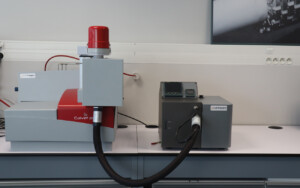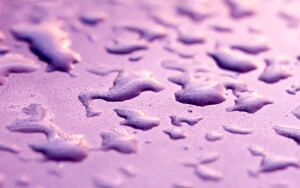Measuring in controlled humidity conditions
Moisture can affect the performance and stability of many families of materials. Comparing measurements in a dry atmosphere with measurements at controlled humidity levels can help characterize this influence.

Measuring under controlled humidity
A wet gas generator can use various technologies, but it always has an outlet from which an atmosphere flows, whose temperature and relative and/or absolute humidity are controlled.
This outlet and the measuring system to which it is connected are linked by a transfer line. The transfer line is heated to a sufficiently high temperature to prevent the water from condensing and thus to effectively transport the generated atmosphere to the measuring system.
Humidity control solutions can be connected to most analyzers on the market, including thermal analyzers and calorimeters.

Controlled humidity measurement applications
Many materials are exposed to varying moisture conditions during preparation, use, storage or aging. These include :
- Pharmaceutical materials: improper moisture levels can cause structural changes and impact the effectiveness of a drug.
- Certain food products: humidity has an impact on a certain number of their qualities, but also on their stability because its presence can promote their biological degradation.
- Construction and insulation materials: their thermal conductivity, and therefore their insulation capacity, can be affected by high humidity levels.
- Metals and alloys: if they are in contact with humidity, especially at high temperatures, they may oxidize and lose their properties.
- Certain ceramics and porous materials: they can also degrade under humidity or fill their pores with water and thus lose their adsorption capacity.
